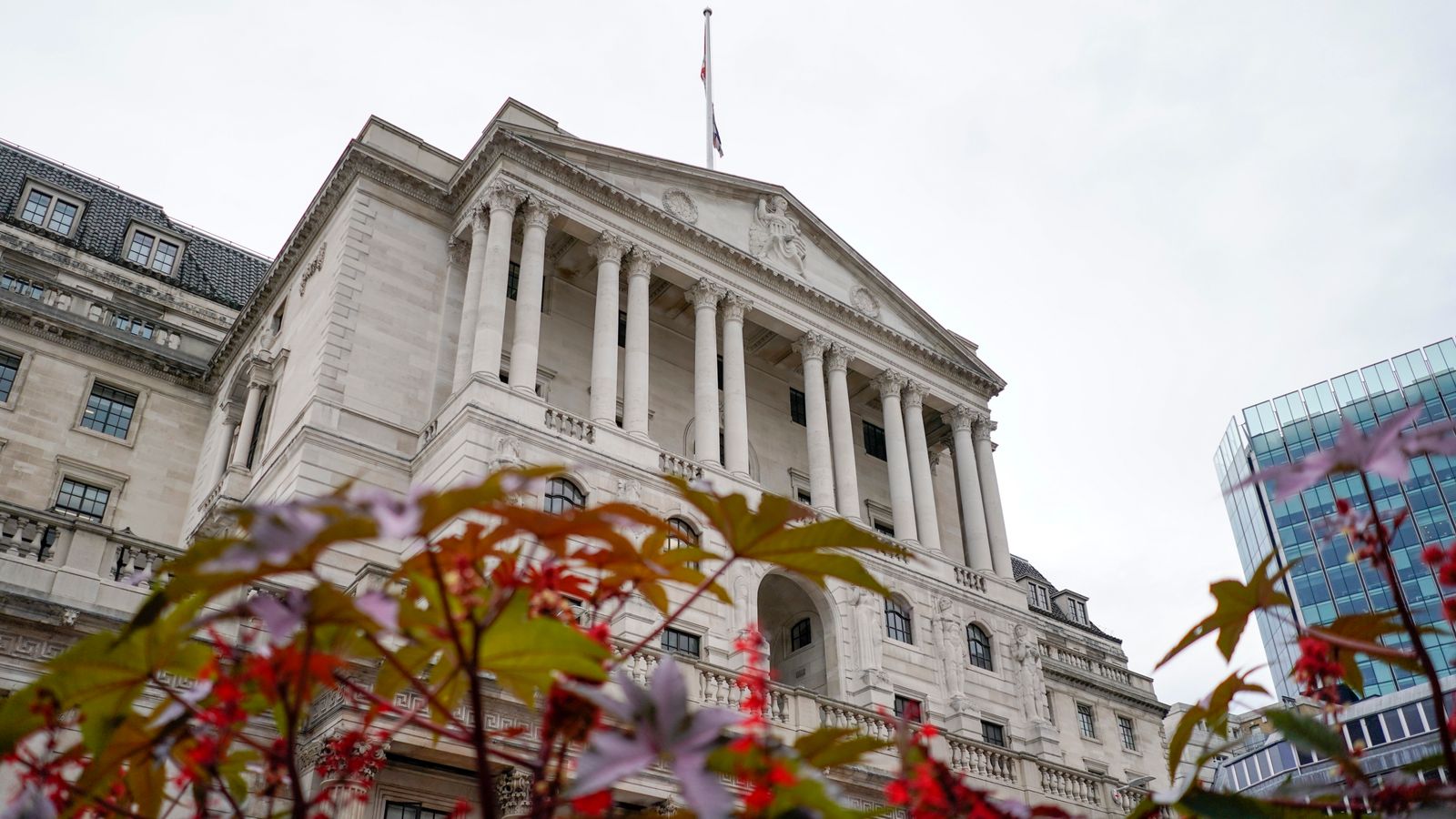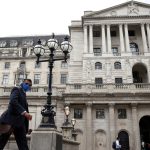The Bank of England has raised interest rates, slashed its growth forecast and warned that families are about to suffer the biggest fall in living standards since comparable records began three decades ago.
On a red letter day in Britain’s cost of living crisis, the Bank said that households will see their post-tax disposable income – the most comprehensive measure of the standard of living – fall by 2% in 2022.
The fall – largely a consequence of higher energy bills but also the rising tax burden and comparatively weak earnings – is considerably bigger than 1.3% fall in 2011, up until now the biggest squeeze since the statistical series begin.
Please use Chrome browser for a more accessible video player
However, the Bank said the risks of an inflationary spiral were now so great that it was willing to compound the pain by increasing the official cost of borrowing from 0.25% to 0.5%, the second increase in two meetings.
It is the first time the Bank has hiked interest rates at two successive meetings since 2004.
It also signalled the beginning of the end for its quantitative easing programme which involved the purchase of £895bn of bonds with printed money, announcing that it would stop buying new bonds when old ones come to the end of their term.
The Bank’s monetary policy committee (MPC) was split on the size of the interest rate increase, with four of its nine members wanting a 0.5 percentage point hike, which would have taken rates to 0.75%.
Energy price cap rises: Millions face average £693 bill hike – but Sunak offers £350 help
Sunak announces government help – live news: Rebates offered as average energy bills to rise 54%
Energy crisis: What is the price cap and why will bills rise so sharply?
This time last year the Bank was forecasting that inflation – the rate at which prices across the economy are changing each year – would be 2% by now, which is its target level.
Instead, the consumer prices index is already at the highest level since the early 1990s, sitting at 5.4%.
In its new forecast, the Bank said it now expected CPI inflation to rise to 7.25% in April – the highest level since the summer of 1991.
The Bank said that these higher costs, which it put down primarily to energy bills and imported goods, would depress consumer spending and economic growth.
It cut its gross domestic product forecast for the UK in 2022 from 5% to 3.75%.
That cuts short the UK’s post COVID rebound just after the size of the economy returned to pre-pandemic levels.
Governor Andrew Bailey told a news conference: “We have not raised rates today because the economy is roaring away.
“An increase in Bank rate is necessary because it is unlikely that inflation will return to target without it.”
Confronted with the fact that the rate hike will add to the squeeze on households, Mr Bailey said: “It is a hard message but if we don’t take this action it will be worse.”
He also signalled that there could be more increases in coming months but cautioned that this did not mean an “inevitable long march upwards”.
The doleful outlook from the economy was brightened only slightly by the Bank’s revelation that it expects relatively strong pay growth this year, with earnings up by 3.75% rather than its previous forecast of 1.25%.
However, these increases are neither high enough to compensate for rising prices, nor are they without their risks.
According to the Bank’s minutes the four MPC members supporting a 0.5 percentage point rate increase argued that “the strong pickup in pay settlements reported to the Bank’s agents, and the recent broadening from goods price to services price inflation, suggested that these developments were now being reflected in domestic costs and prices, which could make CPI more persistent than was expected in the February report central projection”.
“Monetary policy should tighten to a greater extent at this meeting in order to reduce the risk that recent trends in pay growth and inflation expectation became more firmly embedded,” they argued.
However, the most striking number from the Bank today is perhaps the one that encapsulates so many of the problems facing households at present: that real post-tax labour income will fall by 2% this year – the biggest fall ever recorded.
Before the pandemic Britain had just recovered from the biggest squeeze on their real earnings since the Napoleonic era.
The Bank’s latest forecasts suggest another even sharper shock is about to come.






















